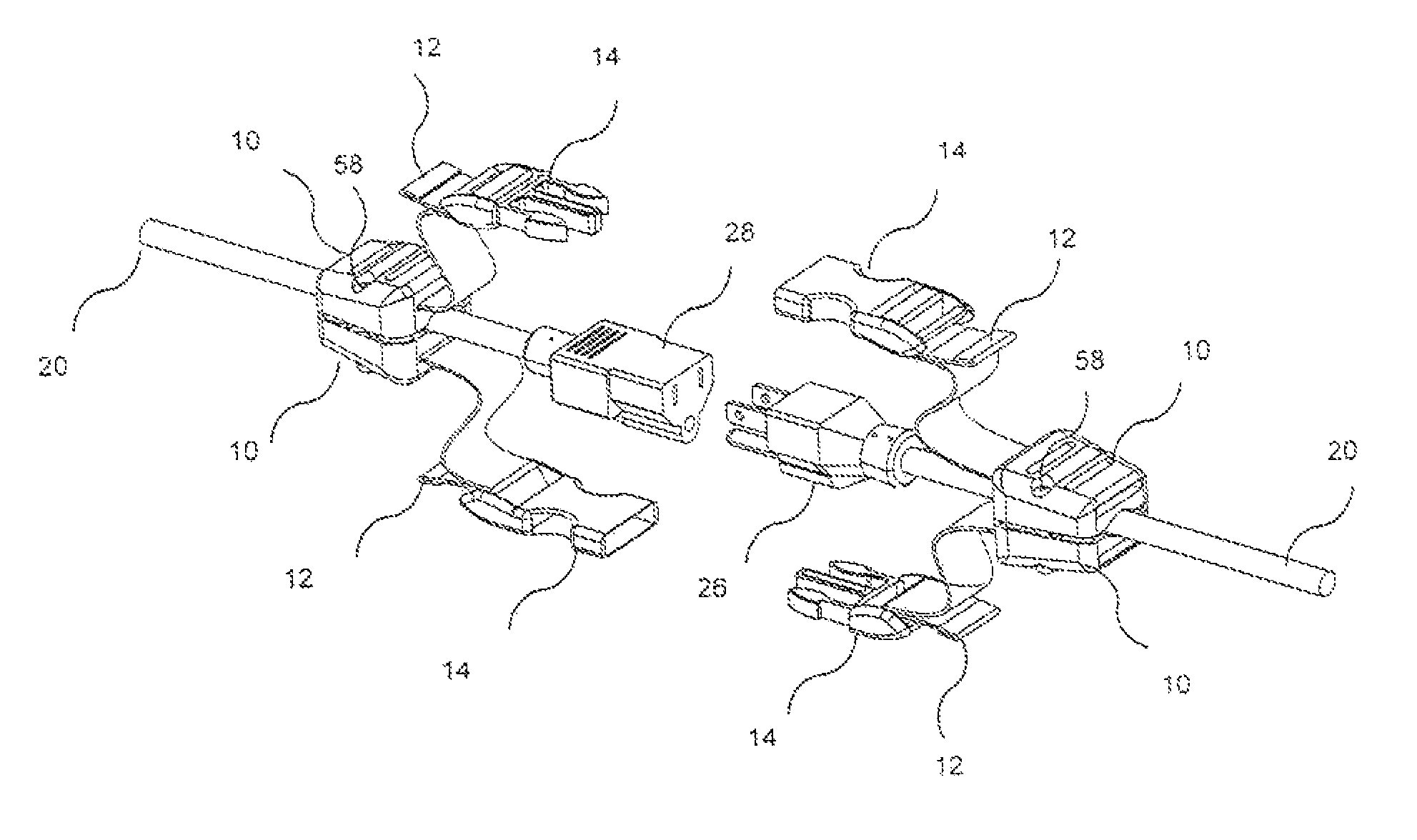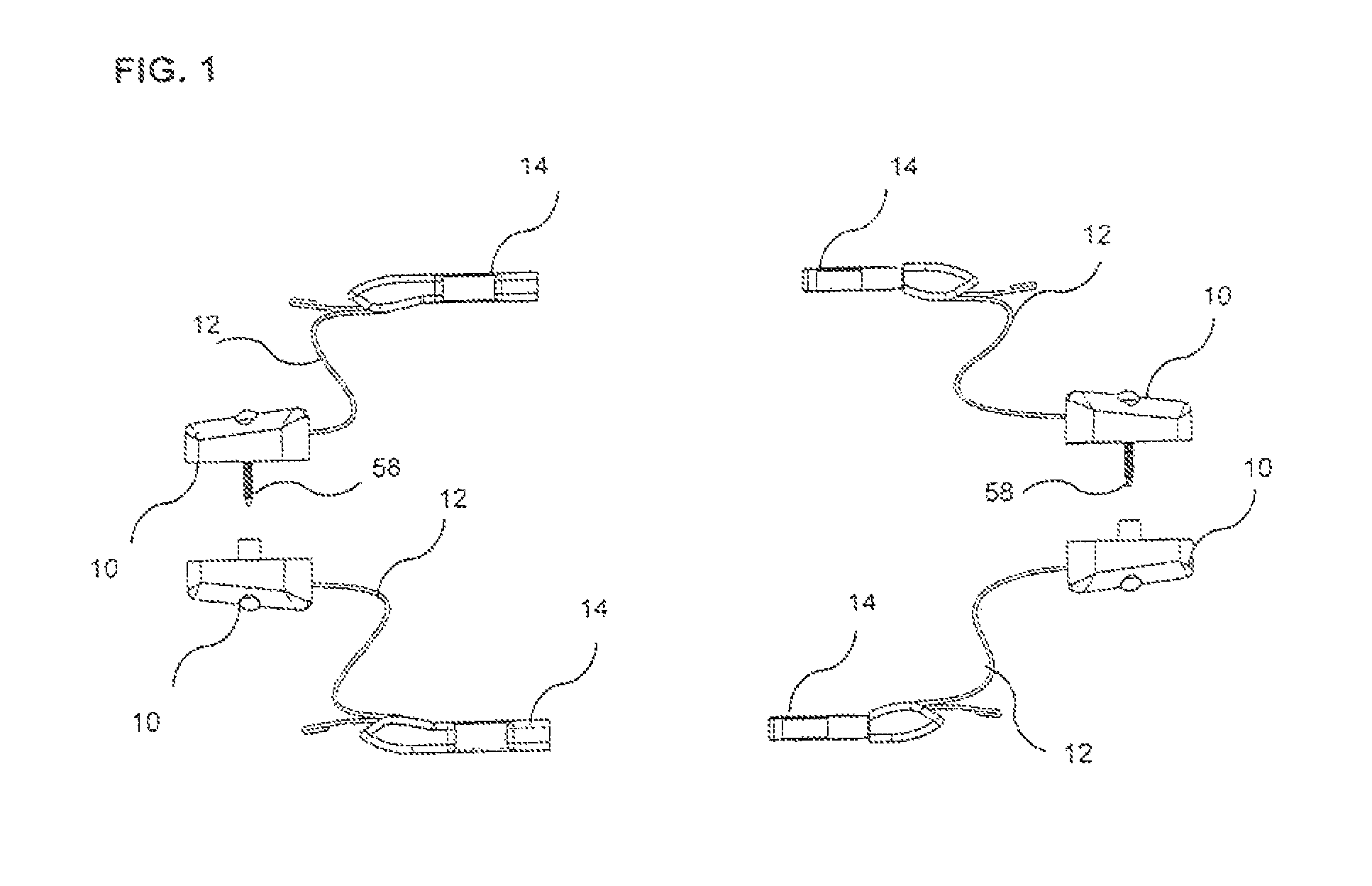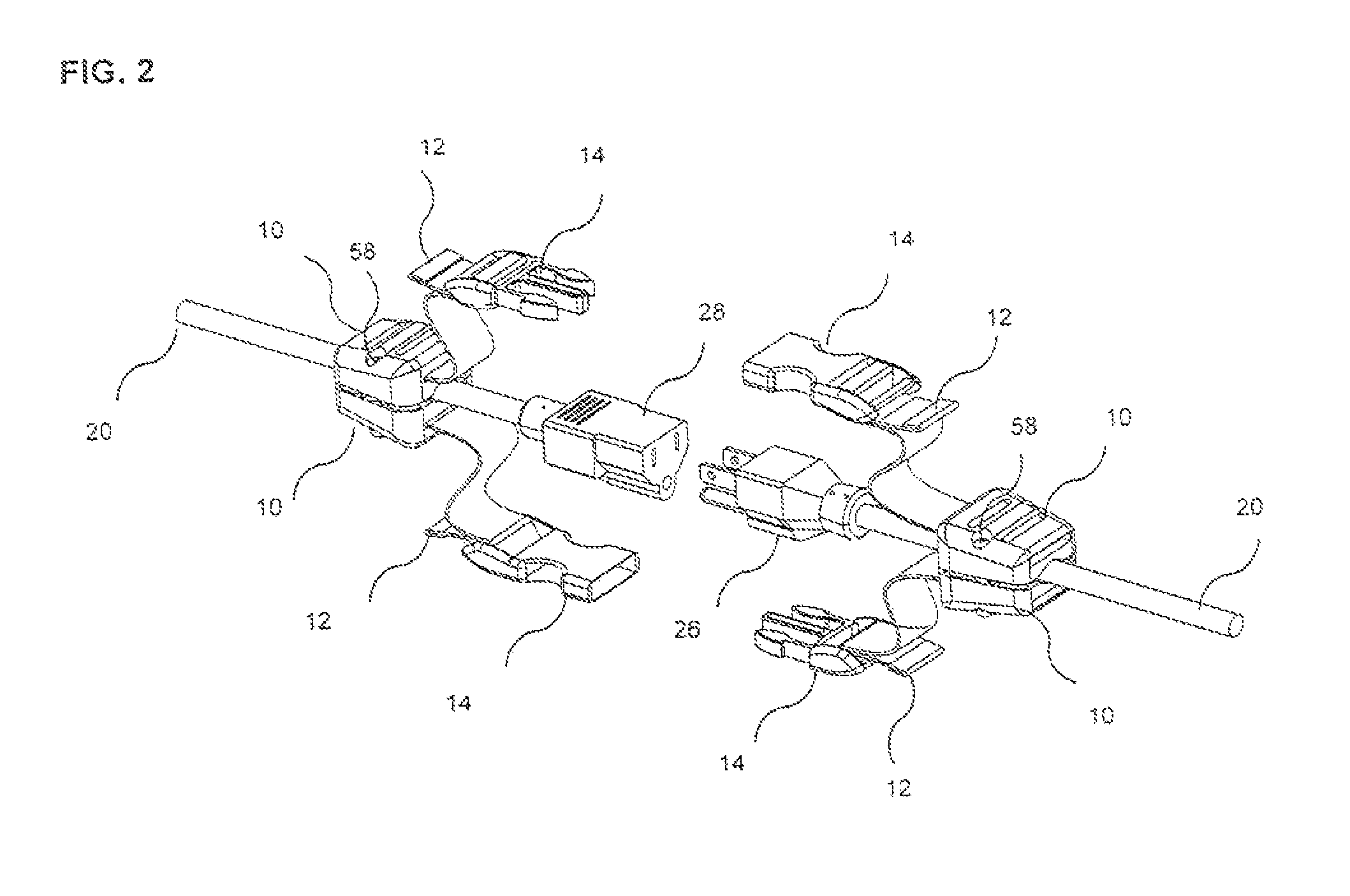Cord, hose and cable fastening system and method
a technology of fastening system and hose, applied in the direction of insulated conductors, coupling device connections, cables, etc., to achieve the effect of convenient accommodation and facilitation, work safely and efficiently
- Summary
- Abstract
- Description
- Claims
- Application Information
AI Technical Summary
Benefits of technology
Problems solved by technology
Method used
Image
Examples
Embodiment Construction
[0041]In greater detail, this present invention, in its preferred form, is a cord, hose and cable securing, device having collar pieces, or members, that fasten together to connect to a cord, hose or cable and that may be fastened together by means, including but not limited to, screws, screwing through holes in one collar and screwing into another; bolts, protruding through one collar and screwing into either the opposite collar or into a nut embedded in the opposite collar; a snap hold, in which two collar pieces, or members, are adjoined on one edge and in which the opposite edge is able to close down and thereby crimp the cord, holding it, and in which a protrusion on one edge of the collar opposite the adjoined edge is snapped over the adjoined collar onto its edge opposite the adjoined edge. The present invention may also employ collar mechanisms that snap or lock together that may not be adjoined, but may be separate pieces, or members. The collar mechanisms of this present i...
PUM
 Login to View More
Login to View More Abstract
Description
Claims
Application Information
 Login to View More
Login to View More - R&D
- Intellectual Property
- Life Sciences
- Materials
- Tech Scout
- Unparalleled Data Quality
- Higher Quality Content
- 60% Fewer Hallucinations
Browse by: Latest US Patents, China's latest patents, Technical Efficacy Thesaurus, Application Domain, Technology Topic, Popular Technical Reports.
© 2025 PatSnap. All rights reserved.Legal|Privacy policy|Modern Slavery Act Transparency Statement|Sitemap|About US| Contact US: help@patsnap.com



